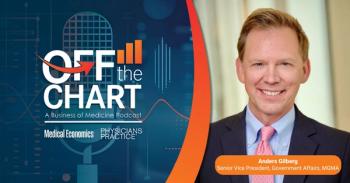
Editor’s Note: Dr. Tom’s Prescription
American healthcare is riddled with too many government and private-payer bureaucrats standing between physicians and their patients. And it’s saddled with perverse incentives that bloat administrative costs pointlessly. Find out what Tom Coburn, an OB/GYN doc and conservative Republican U.S. senator from Oklahoma, thinks the answer is.
“It’s time to admit that the system isn’t working,” says Tom Coburn. “It’s broken - and we didn’t break it.”
By “we,” Coburn means the physician community, of which he is a proud member, not elected officials. He is one of those, too, less proudly. Indeed, the OB/GYN and conservative Republican U.S. senator from Oklahoma blames Washington for the mess healthcare is in, and warned colleagues at the AMA’s annual political advocacy conference in April that healthcare will only get worse for them the more government is involved.
“We’re liable to have all healthcare run by the government,” Coburn told them. “If you really like the compassion of the IRS and the efficiency of the government response to Hurricane Katrina, you’re gonna love government-run healthcare.”
Dr. Coburn’s diagnosis: American healthcare is riddled with too many government and private-payer bureaucrats standing between physicians and their patients. And it’s saddled with perverse incentives that reward unhealthy lifestyles, encourage defensive medicine, and bloat administrative costs pointlessly.
Well, sure. We all know that. But his treatment plan is radical - in its ambition, if not in execution.
Along with modest proposals on tort reform and preventive medicine efforts is a proposal to derail America’s anachronistic system of employer-sponsored healthcare. He suggests (as others have) giving individuals a tax break for purchasing their own health insurance, just as corporations get for providing employee coverage. Noting that the average annual premium for an individual plan is $2,268, Coburn says individuals would get a $2,000 credit for purchasing insurance ($5,000 for families), payable directly to the patient’s insurer.
What if patients could afford to pay for their own healthcare - and insurers were beholden to them, not their employers? Coburn believes that would make you answerable only to your patients, not to suited bureaucrats. For that to happen, though, consumers need the ability to make direct comparisons on price and quality. And having compared, they need the freedom to choose. As it is, most people must take or leave the only health plan their employer offers, so even if healthcare pricing and quality information were clearer, they would have little ability to act.
A person who buys his own health insurance is someone with the power to fire his insurance company and hire another.
“It’s time to not have the government between you and your patients, and it’s time to not have insurance companies mandating what you can and can’t do,” Coburn says.
Lovely. Just one problem: The healthcare tax-credit-for-individuals idea is too modest to reverse the entrenched dysfunctions of American healthcare, which have been growing since the Truman administration. A mere tax rebate is not enough by itself to break the employer-insurer death grip. (More next month on a competing plan that would use blunter force to eliminate employer-sponsored care.) Even if it were enough, it’s hard to imagine insurers would heel to their new patient masters. They’d still be in the business of spending less on healthcare than they earn in premiums.
Still, Coburn is asking the right question: Can health insurance really be called a job “benefit” when it involves employers, as the true purchasers, making cost-control demands of insurers, whatever the effect on “beneficiaries” and their doctors? The answer is no, except when the only alternative is no insurance at all.
But with Uncle Sam essentially footing everyone’s insurance bill (via the tax credit), isn’t the government the true purchaser of healthcare? If so, wouldn’t it make cost-cutting demands similar to employers? It might, but because it would not control which insurers individuals could choose, insurers would be competing for patients’ favor, not the government’s.
And Coburn is hopeful: “If the physician community would come together and say, ‘Here’s the system we want,’ you’d have a system where you could be happy to come to work again. With the right incentives and the right market system in place, we can have healthcare back to the way it used to be.”
Perhaps delivering some 4,000 babies, as Coburn has, gives one an optimistic perspective that we jaded ink-stained wretches can’t fathom. Yet surely I wasn’t the only one to note the date on which he delivered his comments: the first day of the second quarter of the year - April Fool’s Day.
Bob Keaveney is the executive editor of Physicians Practice. Tell him what you think at
This article originally appeared in the May 2008 issue of Physicians Practice.
Newsletter
Optimize your practice with the Physicians Practice newsletter, offering management pearls, leadership tips, and business strategies tailored for practice administrators and physicians of any specialty.









